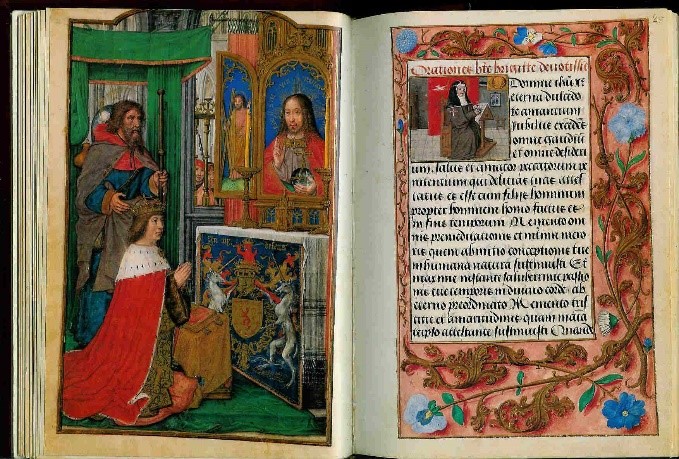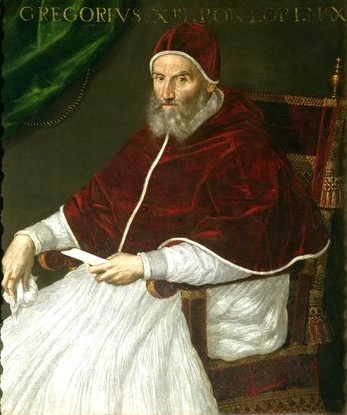Telling the Time
Most people are aware that the way we write dates in Europe has changed over the centuries, but, on further investigation, telling the time turns out to be far more complicated than it first appears.
When did the day begin?
In different countries, the day began at different times. During the 16th century, in most of Italy, the day began at sunset. So, if a letter from Rome is dated ‘the third hour’, to know when it was sent in modern usage, you first have to know the time of sunset in that place, at that time of the year. In Italy, sunset can vary between what we would call 5pm in the north during the winter months, to around 10pm in the south in the summer months, with every day being slightly different.
In Constantinople, the day was measured from noon to noon, and in Moslem countries, the day began at sunrise, which also seems to have been the case in northern Europe (although we don’t have more definite information on this).
The starting point, of course, also affected the day of the month calculation. What was the twenty-third hour of 1st May in Italy, was around the fifth hour of 2nd May in Constantinople, and the seventeenth hour of the 2nd May in Granada.
Not just the sun…
An astrological clock was also used – important for casting horoscopes. This was based on the Chaldean calendar and related to the movements of the planets. The day ran sunrise to sunrise, subdivided into sunrise to sunset, and then back to sunrise. Within those two halves, the period was divided into twelve equal hours. Thus, depending on the time of year, hours in the 12 hour day might be shorter or longer.
Or even the stars…
There was also the canonical clock. This was a twenty-four hour period, during which the ‘hours’ or offices of the Church were recited.The offices were changed over time, and were different in the Eastern and Western churches. Once the Western Church split into Catholic and Protestant, the offices observed diverged, and the post-Reformation Catholic practice became different from the pre-Reformation usage. The beautiful Books of Hours that were objects of great personal importance for the elite of Europe gave suitable renditions of the offices for lay people.

To generalise, the hours were: matins, lauds, prime, terce, sext, none, vespers and compline, spread throughout the day, but reflecting the solar year. So whilst sext was always at the meridian (the sixth hour in a day beginning at sunrise around the equinox), vespers was at sunset, which varies.
What day is it?
In 1515, Pope Leo X summoned theologians and astronomers to recalculate the calendar. The Julian Calendar instituted under the Romans was now out of synchronicity with the sun. This mattered, because the calculation of Easter was extremely important. Following the Council of Nicea in AD 325, Easter Sunday was set as the Sunday following the first full moon after the vernal equinox, unless that full moon falls on a Sunday, in which case, it is the following Sunday. The vernal equinox was calculated as 21 st March. By the sixteenth century, because the Julian Calendar was slightly too long, the equinox was falling earlier than 21 st March.
The Pope requested the rulers of Europe to send their best astronomers and theologians to Rome to help with the calculations. Cardinal Nicholas of Cusa, an early Humanist and talented mathematician, had suggested reforms during the 15 th century but nothing had been done. In the event, despite Leo’s efforts, no changes were made until 1582. Henry VIII had not sent astronomers as requested (rather a surprise, as he was generally interested in astronomical and scientific matters).
By 1578, there was a firm proposition on updating the calendar, made by Aloysius Lillius (Luigi Giulio of Calabria). This updated both the lunar and the solar calendar. Leap years were reduced by removing years not divisible by 400 and the length of the year slightly reduced. To deal with the accumulation of errors since 325 AD, ten days were to be removed.

The idea went out for consultation and was introduced by Pope Gregory XIII in 1582 in the Papal Bull Inter Gravissimas. Catholic clergy were ordered to use the new calculations for Easter, and Catholic monarchs were requested to support it in reference to the civil year.
Most of Catholic Europe implemented the change and 4th October (Julian/Old Style) was followed by 15th October (Gregorian/New Style). Confusion now reigned not just on the time of day, but also the date. Protestant and Orthodox countries did not accept the Gregorian Calendar. Thus the new 15 th October in France would have been considered to be 5 th October in England.
What year?
The Romans dated time from the founding of the Republic, but as Christianity took hold, dates began to be enumerated from the date of the Incarnation of Christ (as calculated by Dionysius for the Nicene Council 325 AD) and numbered AD (Anno Domini). Byzantium, although Christian, did not use the format of Anno Domini, but dated according to the year of creation, calculated as 1 st September 5509 B.C in western reckoning.
When did the year begin?
In the Roman era, the civil year began with the date the consuls took office. From 153 BC this was 1st January. On the introduction of the Julian calendar in 45 BC, the year continued to start then. This practice continued throughout the Roman Empire, and into the Middle Ages but at some point, unclear from the records when, different dates began to be used for beginning years. In England, it was Christmas (25th December) until around the 12th century when it moved to the Feast of the Annunciation (25th March) whilst France dated from Easter, giving a different date each year.Simultaneously, legislation in England was dated to the monarch’s regnal year, so 3rd Elizabeth would run from 17th November 1560 to 16th November 1561.
Nevertheless, 1st January was still celebrated as New Year, with the exchange of gifts.
Gradually, many countries moved to 1st January as the legal year. It is often said that Pope Gregory XIII’s new calendar mandated this change, but, in fact, it did not, although it took 1st January as the first day of the year when showing how the calendar was to be used. Thus Protestant Scotland took changed year dating from 1st January 1600, but Tuscany did not do so until 1750. In England the year change did not occur until 1752 when England, Scotland and British colonies also accepted the Gregorian calendar.
Conclusion
Dates in any historical document should not be taken to be the equivalent of our reckoning, and need to be understood in the context of the conventions in use in the location they were written, but also the default practice of the writer.
An English Ambassador to the Empire in the 1590s would probably have dated letters from Vienna using English style whilst a French Ambassador in London at the same time would have used the Gregorian calendar, with the year beginning at Easter. A Spaniard would have had a different date again.
If all three had written a letter on the day we would consider to be 1 st February 1598, the Englishman would have written 22nd January 1597, whilst the Frenchman would have written 1st February 1597, as Easter fell on the 22 nd March, but the Spaniard would have chosen 1st February 1598. If the letter had been written at 1pm in modern parlance in Florence, then it would have been dated 31 st January 1597 (Italy changed to 1 st January dating in 1750). Beware of certainty!
Throughout Tudor Times, we have given dates with the years dated from 1 st January, but the day and month as on the original document or transcription. So, Katharine of Aragon’s death is given as occurring on 7 th January 1536, even though at the time, it was recorded as 7th January 1535. We have made no attempt to work out the times of sunset or sunrise on any particular day, or at any location!
For information on dates, times, saints’ days etc, try Cronologia, Cronografia e Calendario perpetuo by Adriano Capelli. It is in Italian, but many of the lists of dates can be easily understood.










